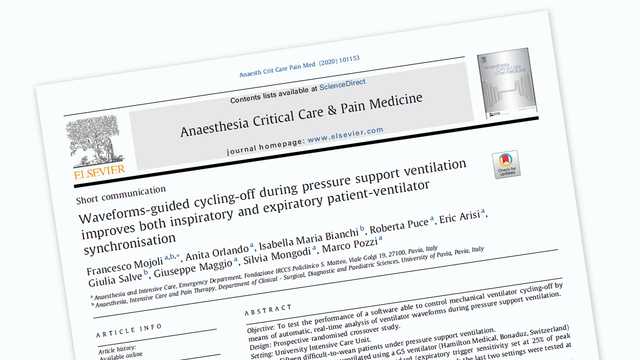
Date of first publication: 07.10.2022

The prospective randomized crossover study was conducted in an Italian University ICU on 15 difficult‑to‑wean patients with normal or obstructive lung mechanics undergoing pressure‑support ventilation. The investigators compared automated control of cycling‑off at both baseline and high (50% increase) pressure support with the standard cycling‑off setting (ETS set at 25% of peak inspiratory flow), as well as cycling‑off optimized by an expert clinician at both baseline and high pressure support.
Decrease in cycling delay and ineffective efforts
Results showed a significant decrease of more than 85% in cycling delay (407 ms vs. 59 ms) with automated versus standard settings at baseline pressure support, exceeding the primary endpoint reduction of 75%. The number of ineffective efforts was more than 75% lower (12.5% vs. 2.8%), exceeding the secondary endpoint of a 50% reduction.
Cycling delay with automation was also shorter than with expert optimization at both baseline and high pressure support. At high pressure support, cycling delay increased in the expert‑optimization arm but not in the automated arm, and remained significantly longer even after the second optimization.
At both pressure‑support levels, the asynchrony time was significantly lower with automated settings than with expert optimization. Similarly, tidal volume decreased with automated settings at both levels.
Automated versus expert optimization
The authors found that automated cycling‑off was as good as, if not better than expert optimization for improving patient‑ventilator interaction, and superior in terms of decreasing cycling delay. This may be due to the expiratory trigger adapting in real time to the patient’s effort, as opposed to the fixed ‑ albeit personalized ‑ sensitivity when optimized by the expert.
See full citation below (


